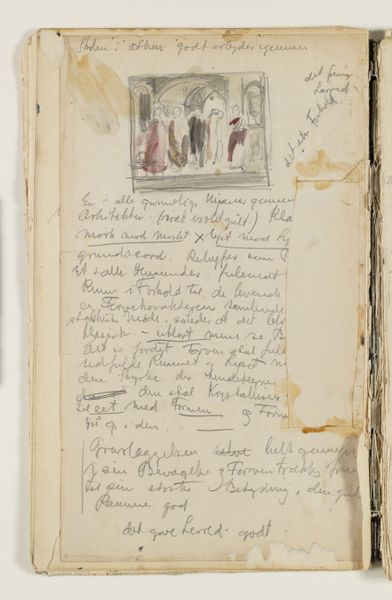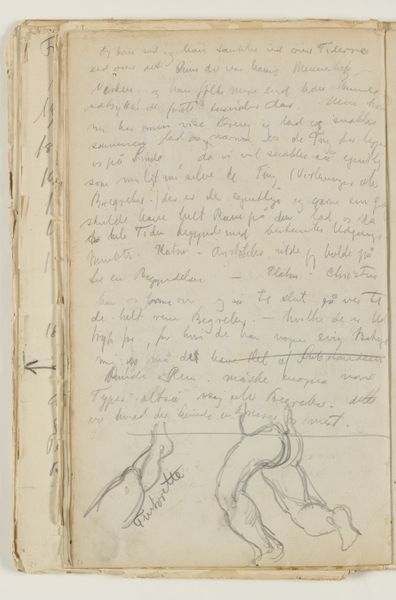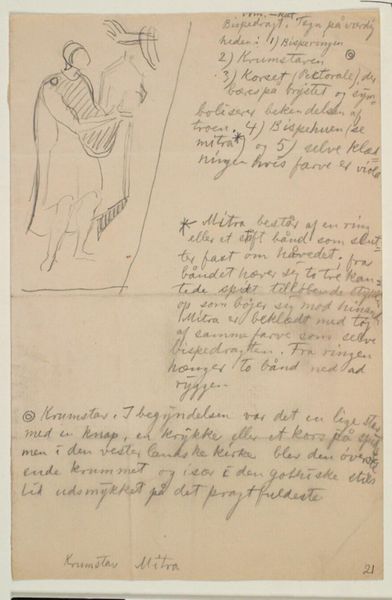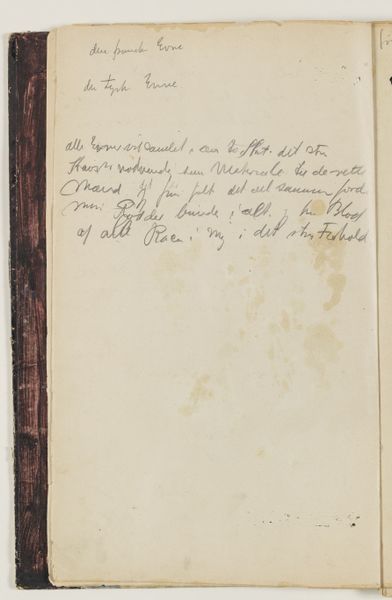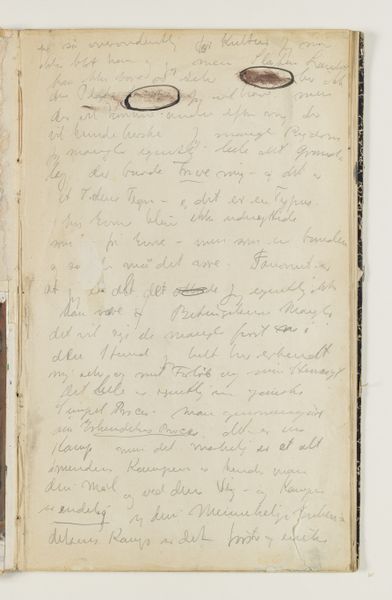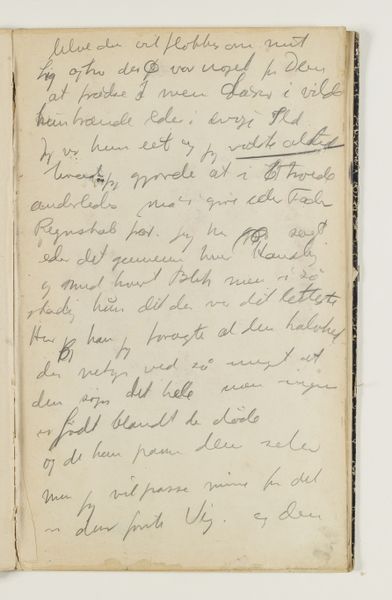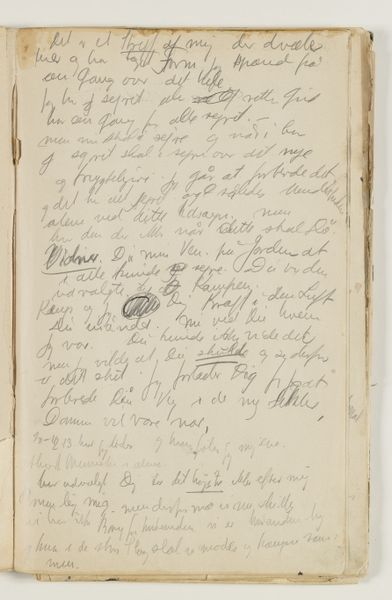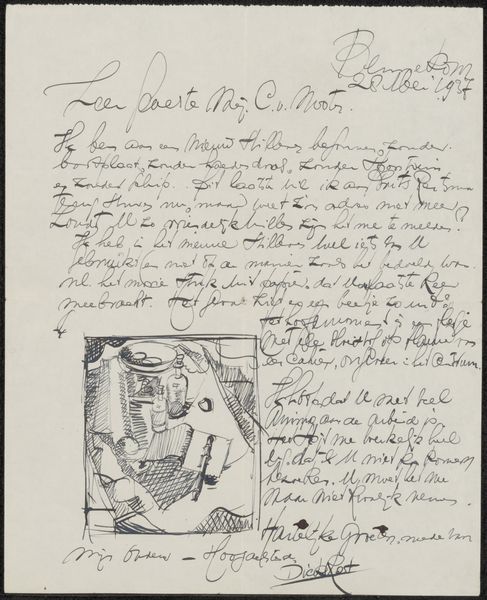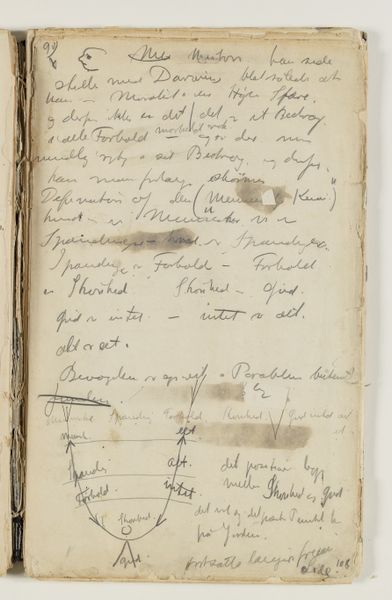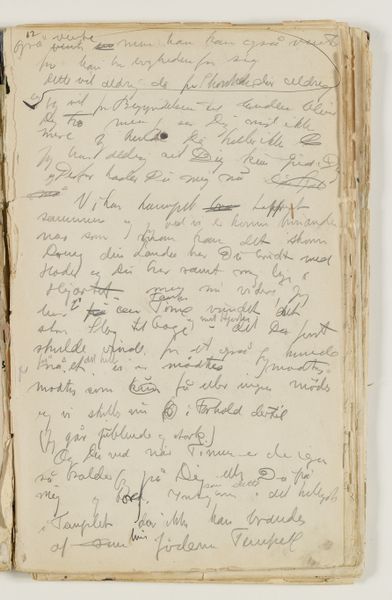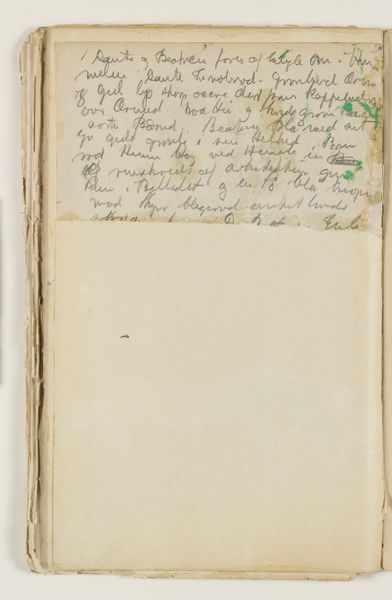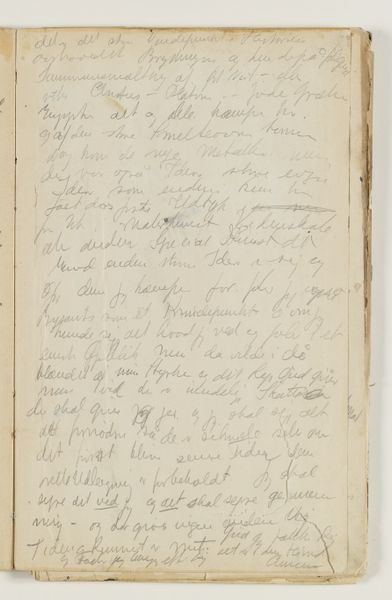
Studie med kommentarer til eller efter kunstnerens maleri "De hellige tre Konger", her tillige kaldet "Profeterne" 1913 - 1914
0:00
0:00
Dimensions: 337 mm (height) x 207 mm (width) (bladmaal)
Curator: Here we have J.A. Jerichau’s “Studie med kommentarer til eller efter kunstnerens maleri 'De hellige tre Konger', her tillige kaldet 'Profeterne'”, created between 1913 and 1914, using drawing, ink, pastel, and watercolor on paper. The scattered notes alongside the sketch itself almost give the impression of a glimpse into the artist's working methods, as if it were documenting his evolving thinking. What strikes you most about it? Editor: It’s interesting how the visible notes almost seem to challenge the separation of sketch and thought, like they're both existing on equal terms, each essential to the process. The impressionistic rendering and mixed media certainly add to this mood. Considering its creation in the early 20th century, what was the socio-political climate surrounding art at the time, and how does this piece speak to it? Curator: Good question. This work arises at a time when art institutions, like the Statens Museum for Kunst which houses this piece, are solidifying their role as cultural gatekeepers. The visible commentary here—the messy working out of ideas—could be interpreted as resisting that clean, finished aesthetic that museums often promote. Editor: That's fascinating. So, by including the notes, is Jerichau perhaps challenging the institutional narrative, hinting at a more chaotic and personal artistic process? Curator: Precisely! The notes could also be him negotiating earlier art historical representations of religious themes like the Adoration of the Magi - themes he renders in a thoroughly modern impressionistic way. This allows a personal lens on subjects typically freighted with academic expectation. How do you feel this piece relates to ideas about what ‘art’ should be for the public versus the artist? Editor: I see. So, it becomes a commentary on the art world itself, reflecting the tensions between personal expression and institutional expectations. I hadn’t considered it that way at first. Thank you. Curator: It's always enlightening to view art through different lenses! Considering the period, these tensions were highly influential in shifting cultural attitudes around visual art and expression.
Comments
No comments
Be the first to comment and join the conversation on the ultimate creative platform.
